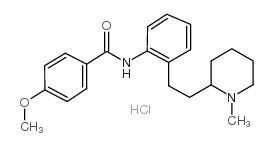Efficacy of class 1C antiarrhythmic agents in patients with inducible ventricular tachycardia refractory to therapy with class 1A antiarrhythmic drugs.
J E Tisdale, J Kluger, J R Fisher, M S Chow
Index: J. Clin. Pharmacol. 33(7) , 623-30, (1993)
Full Text: HTML
Abstract
The efficacy of class 1C antiarrhythmic agents was determined in 36 patients with inducible sustained monomorphic ventricular tachycardia during baseline electrophysiology study (EPS), who continued to have inducible monomorphic ventricular tachycardia during EPS on class 1A antiarrhythmic therapy. Of 12 patients who partially responded to class 1A drugs, 11 (91.7%) continued to have a partial response during EPS on class 1C therapy, whereas one patient did not respond. Of 24 nonresponders to class 1A therapy, 2 (8.3%) responded during EPS on class 1C therapy, 7 (29.2%) partially responded, and 15 (62.5%) did not respond. In the 24 nonresponders to class 1A therapy, 9 of 17 patients (53%) with left ventricular ejection fraction (EF) > or = 30% responded or partially responded to class 1C therapy, compared with none of 7 patients with EF < 30% (P < .05). The EPS on class 1C agents in patients who fail to respond to class 1A therapy may be warranted only in those with EF > or = 30%.
Related Compounds
| Structure | Name/CAS No. | Molecular Formula | Articles |
|---|---|---|---|
 |
Encainide hydrochloride
CAS:66794-74-9 |
C22H29ClN2O2 |
|
Encainide hydrochloride and flecainide acetate: two class 1c...
1987-11-01 [Clin. Pharm. 6(11) , 839-50, (1987)] |
|
ST segment elevation induced by class IC antiarrhythmic agen...
1998-11-01 [J. Cardiovasc. Electrophysiol. 9(11) , 1167-72, (1998)] |
|
Adherence and arrhythmic mortality in the cardiac arrhythmia...
1996-03-01 [Ann. Epidemiol. 6(2) , 93-101, (1996)] |
|
Developmental electrophysiology of encainide and its major m...
1994-01-01 [Biol. Neonate 66(6) , 330-8, (1994)] |
|
Antifibrillary action of class I-IV antiarrhythmic agents in...
1995-07-01 [J. Cardiovasc. Pharmacol. 26(1) , 132-6, (1995)] |